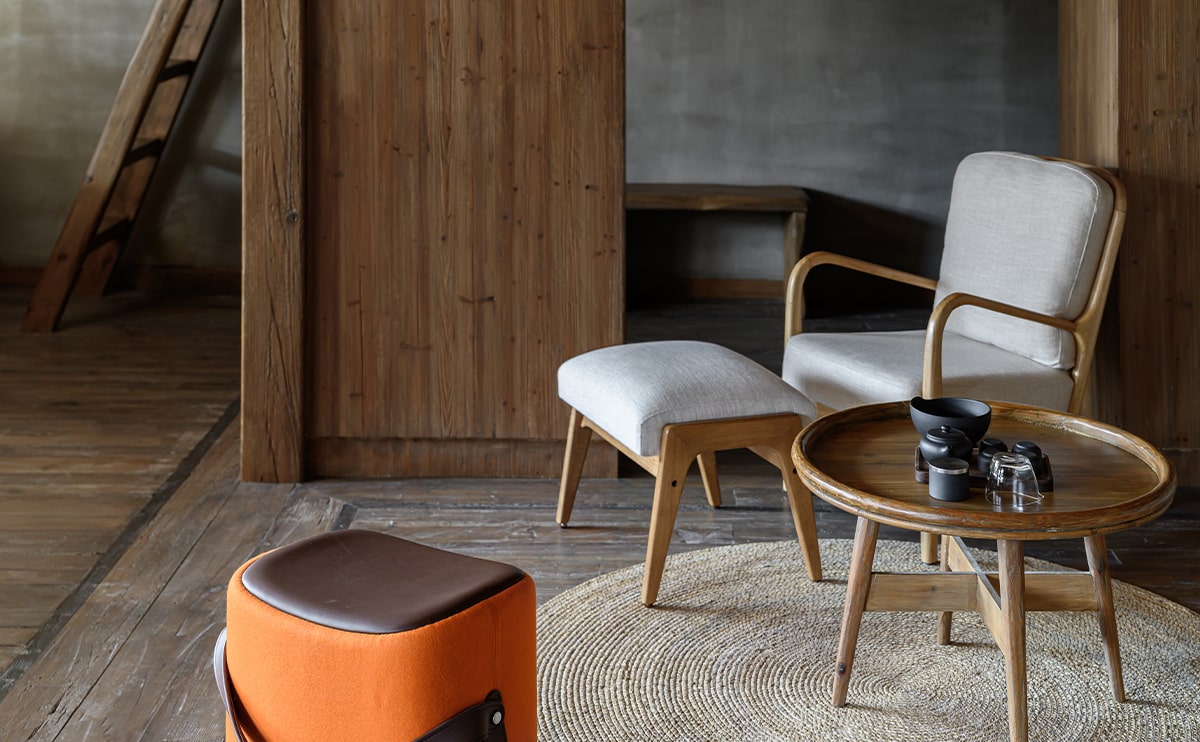Ever wondered why recliner chairs weigh so much? Their substantial weight often surprises first-time buyers and those moving them.
This article delves into the reasons behind the hefty recliner chair weight. We’ll explore the role of materials, design, and additional features that contribute to the weight of these comfort-centric furniture pieces.

Contents
- 1 The Role of Materials in Recliner Chair Weight
- 2 The Reclining Mechanism and Its Impact on Weight
- 3 Dimensions and Design: How Size Influences Weight
- 4 Heavy-Duty Recliners: Built to Last and Support
- 5 Additional Features That Add to the Weight
- 6 Stability and Safety: The Weight is There for a Reason
- 7 Moving and Handling Your Heavy Recliner
- 8 Conclusion: Weighing the Benefits of Recliner Chair Weight
The Role of Materials in Recliner Chair Weight
The materials used in recliner chairs significantly influence their weight. Solid wood frames provide strength but add notable heft.
Steel supports are essential for durability, especially in heavy-duty recliners, contributing to their overall mass. Plush cushioning enhances comfort but also increases weight.
Recliners built with quality materials ensure a longer lifespan, making the trade-off for added weight worthwhile. Materials like leather or dense fabric further contribute to the heaviness, offering both durability and an aesthetically pleasing appearance.
The Reclining Mechanism and Its Impact on Weight
The reclining mechanism is a key reason behind a recliner chair’s weight. These mechanisms often involve multiple moving parts that require robust support.
Complex systems, such as power recliners, require motors and electrical components, adding significant mass. Even manual recliners have sturdy springs and levers to facilitate smooth operation.
The engineering behind these mechanisms ensures reliable performance, which necessitates heavier construction. Reliable support is crucial to ensure the safety and functionality of the reclining feature.
The additional weight from the reclining mechanism is a testament to its engineering quality and durability. Consumers benefit from this feature’s convenience and comfort, justifying its contribution to the chair’s overall weight.
Dimensions and Design: How Size Influences Weight
A recliner’s dimensions can significantly affect its weight. Larger recliners naturally use more materials, increasing their overall mass.
Design also plays an important role in the weight equation. Some recliners incorporate thicker cushioning for extra comfort, contributing to their heft.
Recliners designed for spacious comfort often have wider frames and deeper seats, adding pounds. This design choice also enhances the user experience, offering greater relaxation.
Ultimately, the size and design of a recliner chair are major factors that contribute to its substantial weight. Carefully considering these elements can help buyers select a recliner that suits their needs without being unexpectedly heavy.
Heavy-Duty Recliners: Built to Last and Support
Heavy-duty recliners are specifically designed to support larger weight capacities, making them robust seating options. They are constructed with high-strength materials to ensure durability and longevity.
These recliners often feature reinforced frames and steel supports, adding to their substantial weight. This construction is essential for both safety and reliability.
The added weight of heavy-duty recliners also contributes to their stability. It prevents tipping and supports different reclining positions comfortably.
Choosing a heavy-duty recliner means investing in a reliable chair. It’s designed to withstand frequent use without compromising comfort or structural integrity.
Additional Features That Add to the Weight
Many recliners come with extra features that enhance the user experience but also increase the chair’s weight. Massage systems, for instance, include motors and wiring, which can significantly add to the total load.
Heating pads built into recliners offer cozy comfort during colder months. However, these pads, along with the necessary electrical components, contribute to the chair’s heft.
Power lift functions, designed to assist individuals with mobility issues, are another feature that adds weight. These mechanisms require sturdy motors and secure housing, further increasing the recliner’s overall mass.
Stability and Safety: The Weight is There for a Reason
The substantial weight of recliner chairs plays a crucial role in ensuring stability and safety. Heavier chairs are less likely to tip over during use, offering peace of mind to users.
This stability is particularly important for individuals with mobility challenges. The added weight ensures the chair remains firmly grounded when getting in or out.
Moreover, a heavier recliner often signals durability. These chairs are built to withstand years of use, maintaining safety standards over time.
Moving and Handling Your Heavy Recliner
Moving a heavy recliner can be a daunting task. Planning the move by measuring doorways and paths helps avoid obstacles.
Consider seeking help from others to manage the weight safely. Using furniture sliders or moving blankets can protect your floors and make the task easier.
If assembling or disassembling parts is an option, take advantage of it. This can significantly lighten the load, allowing for easier movement and positioning within your space.
Conclusion: Weighing the Benefits of Recliner Chair Weight
Understanding why recliner chairs weigh so much aids in choosing the right model for your needs. Consider weight as part of the buying decision to ensure comfort and durability.
Recliner chair weight signifies quality and features that enhance comfort. Evaluate your preferences and space to enjoy the benefits these chairs offer.
